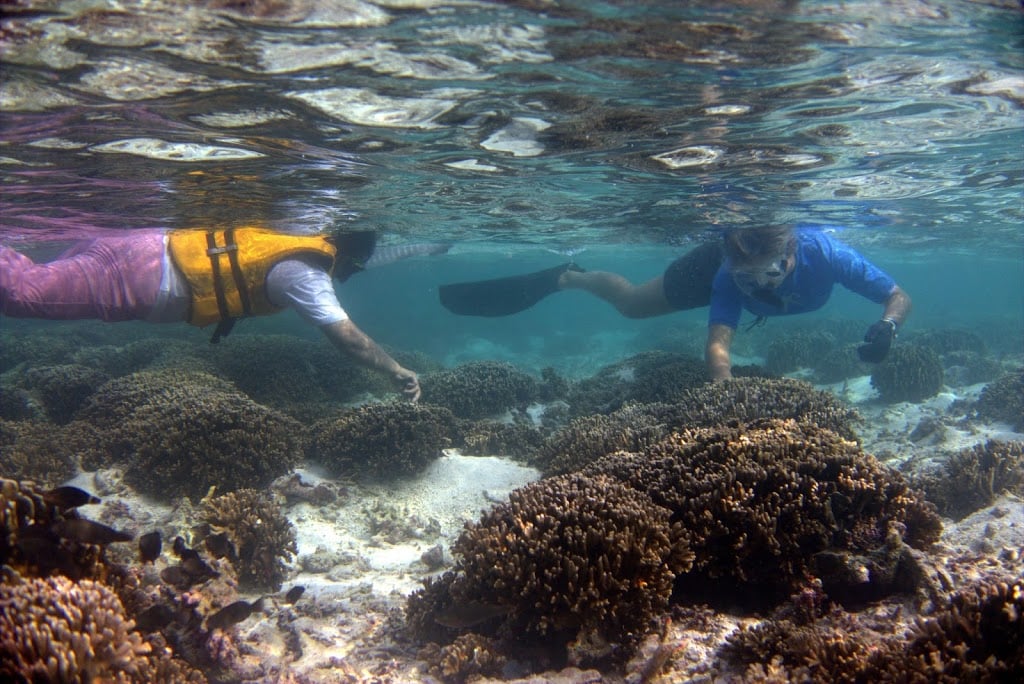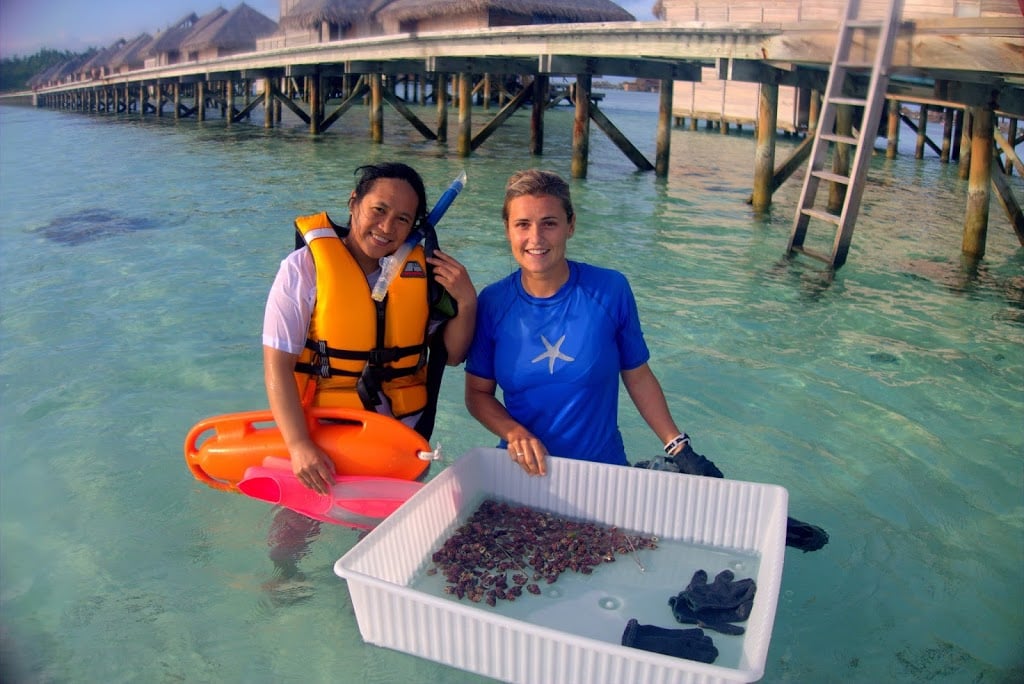 |
| Drupella aggregate on Montipora, leaving a white coral skeleton behind |
 |
| Spa Therapist, Esther, swaps jobs for the day! |
Drupella cornus are a coraliverous species of snail known to prey upon fast growing branching coral species. Following the recent El Nino of 2016 which killed of ~80% of corals on most reefs in the Maldives, we are seeing what appears to be an outbreak of these snails, with up to 20 individuals found preying upon one coral colony. We believe however, that the number of snails has not increased, merely their prey has drastically decreased, causing those existing snails to aggregate on the remaining coral and making it appear as if there are more than before. When the coral-snail ratio is thrown off balance following a major disturbance such as coral bleaching, it can be detrimental to the reef. In their usual small numbers, these snails do influence reef structure and biodiversity in a positive way, much like the Crown of Thorns Starfish (Acanthaster planci), but when there are too many snails in comparison to the amount of coral, reef managers are encouraged to step in to control the predator outbreak, much like we have been doing with the Crown of Thorns Starfish. At Gili Lankanfushi, we are lucky in that we have huge amounts of a coral known as Montipora digitata on our Eastern Reef Flat which was unaffected by the massive El Nino in April. It has recently become a favourite food of these pesky Drupella snails, and so myself and Josie decided to arrange a snorkel with our hosts to remove as many as possible in the hope of restoring some balance to the predator-prey relationships.
 |
| Josie and Esther with their Catch of the Day! |
Within 30 minutes, 3 of us were able to remove more than 300 snails! We plan to go back over the coming weeks to make more of a dent in the population. It’s important we don’t remove them all though, as a great number of fish species naturally prey on these snails, and we don’t want to steal their dinner! Triggerfish, porcupine fish, snapper and bream are just some of the fish groups known to eat Drupella, and we wonder if the fish are finding it easy to snap them up in their aggregated state, will we see a small increase in fish numbers in the near future?